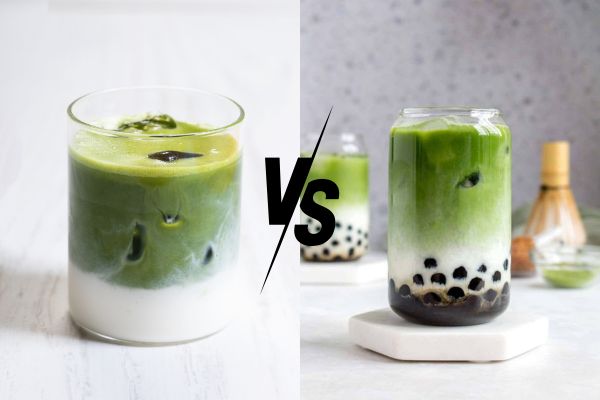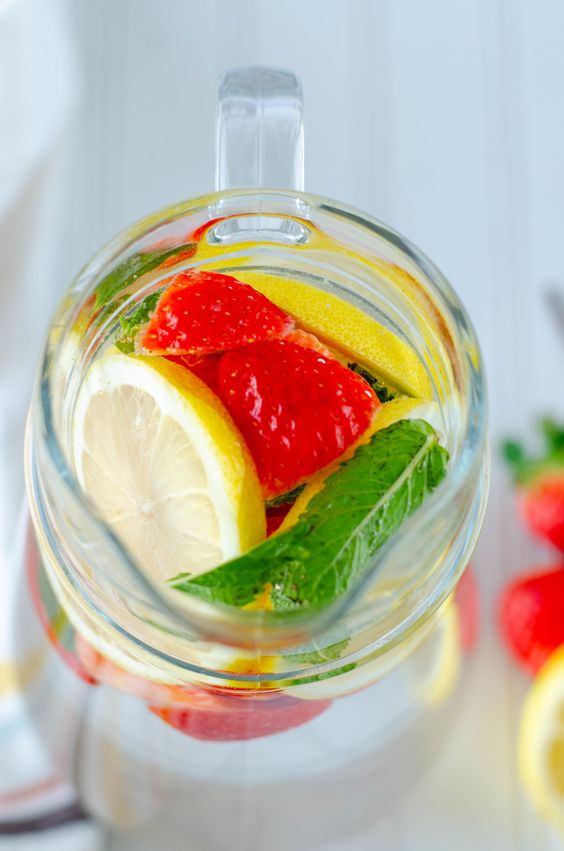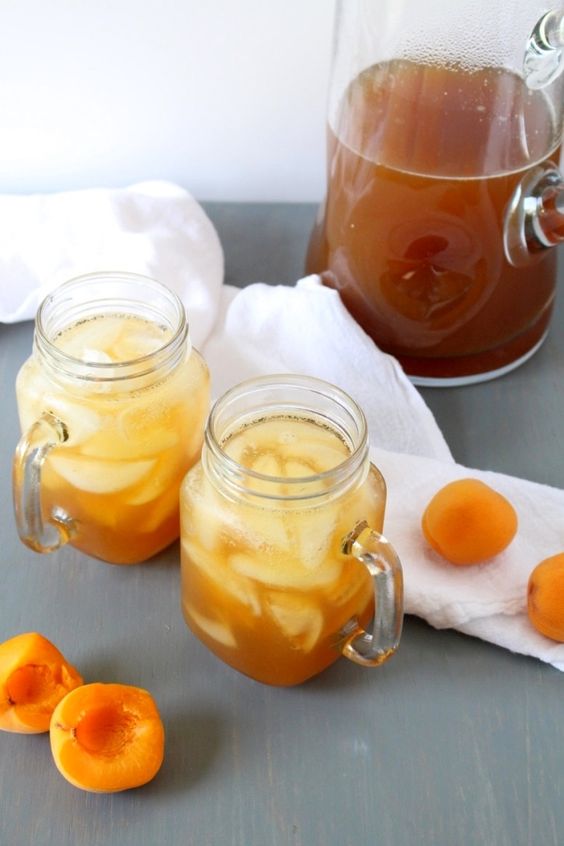Are matcha latte and matcha milk tea the same? If not, in what ways do they differ? Let’s explore the answer in this article.
Contents
ToggleIntroduction
In recent years, matcha has become a global hit. This bright green tea powder has been used in various drinks, with matcha latte and matcha milk tea being the most well-known. Both have a mild green color with a creamy texture, so some people might misunderstand that they are the same. However, they still differ in ingredients, flavors, preparations, and cultural origins. Let’s look deeper to see what sets them apart.
Definition and ingredients of matcha latte and matcha milk tea
Matcha latte
Matcha latte is a contemporary fusion beverage that combines traditional matcha tea with milk or milk alternatives, such as almond, oat, or soy milk. The name “latte” might be derived from the Italian “caffè latte” meaning “milk coffee”. Blending matcha powder and milk creates a creamy and smooth drink that highlights matcha’s flavor. These two ingredients are what you need to make matcha latte; however, sometimes sweeteners can be added depending on personal preferences.
Matcha milk tea
On the other hand, matcha milk tea is a beverage inspired by the bubble tea trends. This trend originated in Taiwan in the 1980s and has been gradually greeted and favored by young people worldwide. Matcha milk tea combines matcha, milk, sweeteners, and toppings like tapioca pearls, jelly, pudding, or cheese foam. The result is a refreshing and slightly sweet beverage with a creamy texture and chewy experience. The adaptation of matcha milk tea is also considered a cultural exchange, merging traditional tea practices with modern trends.

Flavor profiles of matcha latte and matcha milk tea
Because matcha powder is the main component of matcha latte and matcha milk tea, their primary flavor profiles might be similar. However, the addition of other ingredients will change the overall taste.
Matcha latte
Traditional matcha tea has a robust and grassy flavor profile with a note of bitterness and a characteristic umami taste. The addition of milk in matcha latte creates a creamy texture that lessens the bitter hints and emphasizes the umami notes of matcha. Therefore, matcha latte is considered a more approachable beverage for individuals new to matcha.

Matcha milk tea
Compared to matcha lattes, matcha milk tea is typically sweeter and has a more dessert-like flavor. The earthy and grassy notes of matcha may be milder, while the sweetness is enhanced by sweeteners, syrups, and tapioca pearls. This combination transforms matcha into a drink that is significantly different from its traditional form and is more popular among younger consumers.
Preparation and variations
In addition to ingredients and flavor profiles, matcha latte and matcha milk tea also witness some differences in preparation.
Matcha latte
To prepare a matcha latte, start by sifting about 2 grams of matcha powder to break up any slumps. Add a small amount of hot water into the matcha and whisk in a W or M motion until smooth and frothy. If making a warm matcha latte, gently add warm milk to the cup of matcha to create layered effects. Meanwhile, add some ice and gradually pour cold milk into the matcha to make a cold matcha latte. You can adjust the matcha-to-milk ratio to get a richer or milder flavor. Besides, sweeteners like honey or sugar can be added according to personal taste.
The type of milk used in matcha latte will decide the texture and flavor of the beverage, creating different variations. For instance, whole dairy milk brings a rich and creamy texture while enhancing the natural umami of matcha. Meanwhile, oat milk can add a light and nutty flavor to the blending. It can also soften the grassy and bitterness of matcha, making the beverage more accessible. Additionally, almond, soy, and coconut milk are among some other popular milk options.

Matcha milk tea
Matcha milk tea is a great combination of matcha’s earthy and grassy notes, the creaminess of milk, and the chewy texture of tapioca pearls. After whisking the matcha, the blend is mixed with cold milk and sweeteners. After that, it is often shaken and blended with some ice cubes. The tapioca pearls are added to the bottom of the glass, followed by the matcha milk mixture.
Traditional milk tea’s toppings only contain tapioca pearls. However, gradually, various toppings are created and added to milk tea, including jelly, pudding, or cheese foam. In addition, similar to matcha latte, the milk ingredient in matcha milk tea can vary from dairy to plant-based milk. Sometimes, it can even be replaced by creamers or powdered milk.

Health benefits and nutritional value
Matcha is known as a rich source of antioxidants, especially catechins such as EGCG. Matcha is favored by many people thanks to its potential health benefits, including enhanced heart health, brain function, and metabolism. Nevertheless, its preparation can affect the health benefits and nutritional values of matcha.
Matcha latte with simple preparation and minimal sweeteners can maintain the majority of nutrition and health benefits. Meanwhile, matcha milk tea often contains tapioca pearls, syrups, creamers, and more sweeteners, resulting in higher sugar and calorie beverages. Besides, the caffeine content in each drink will depend on the amount of matcha used. However, matcha latte often uses premium matcha with a higher concentration, leading to a higher caffeine amount.
As a result, matcha latte is frequently known as a healthy version of matcha beverages. It is suitable for those looking for a less sweet drink with a strong and authentic matcha flavor. On the other hand, matcha milk tea suits people who are craving something sweet and are a big fan of tapioca pearls.

Conclusion
Although looking quite similar, matcha milk tea and matcha latte are different. They differ in cultural origins, ingredients, flavor profiles, and preparations. Both are suitable for those new to matcha. Therefore, if you are looking for matcha drinks, give these two drinks a try to find out which suits you better.
About Future Generation Co.,Ltd
Future Generation Company Limited is one of the largest beverage suppliers in Vietnam, with 29 years of experience in production and export. FGC is equipped with modern machines such as Hotfill PET and TetraPak, ensuring high-capacity production. FGC strives to achieve our mission to become Vietnam’s leading healthy beverage company. Our factories also meet international standards such as ISO, HACCP, etc. In addition, we constantly innovate our machinery system, strengthen production capacity, and increase productivity.
FGC also provides Private Label Services. With this service, we can help customers in researching and formulating beverages, designing product label packaging, and creating their own brands. This is an ideal solution for small and medium enterprises. Moreover, FGC provides free samples for customers to test before bulk orders. We also ensure delivery as fast as possible.
Contact
Address: R4 building, Office Quarter 02, Royal City, 72A Nguyen Trai St., Thanh Xuan Dist., Hanoi.
Phone: +84 24 73 000 125/ +84 24 73 063 369
Mail: info@vietnam-tea.com
Website: https://oem-fgc.com/
Facebook: https://www.facebook.com/fgcvietnamtea
LinkedIn: https://www.linkedin.com/company/fgcvietnamtea/
Alibaba: https://fgcvietnam.m.trustpass.alibaba.com/
Sources:
https://richingmatcha.com/matcha-latte-vs-matcha-tea-a-comprehensive-comparison/
https://majestycoffee.com/blogs/posts/matcha-milk-tea-vs-matcha-latte





